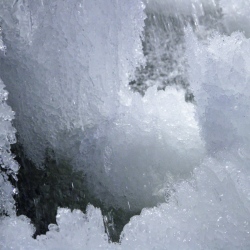
The pictures were taken by Nasa’s Mercury Messenger spacecraft, which has been orbiting just tens of kilometres from the planet’s surface. This has allowed it to gather high-resolution data before the probe crashes into Mercury. This will end its four-year mission around the first planet from the Sun.
You could be forgiven for wondering how a planet where temperatures soar above 400C could host water-ice. But some impact craters at the north pole of this scorching world are always shadowed from the Sun, turning them into cold traps.
"We’re seeing into these craters that don’t see the Sun, at higher resolution than was ever possible before," Dr Nancy Chabot, the instrument scientist for Messenger’s Mercury Dual Imaging System (MDIS), told a news conference.
Dr Chabot was speaking at the 46th Lunar and Planetary Science Conference (LPSC) in The Woodlands, Texas. Comets smashing into Mercury’s surface probably brought both the ice and the dark, carbon-rich (organic) material that Messenger sees in these polar cold traps.
In the coldest of these craters, the researchers see mostly ice, which probably has the organic material within it as a small component. But in those polar craters that get more sunlight, surface ice disappears, forming a concentrated layer of organic compounds that overlies and protects older ice deposits beneath.
These dark organic layers have sharp boundaries, which suggest the deposits are young. Otherwise, said Dr Chabot, the boundaries would have been disrupted by small meteorite impacts.
